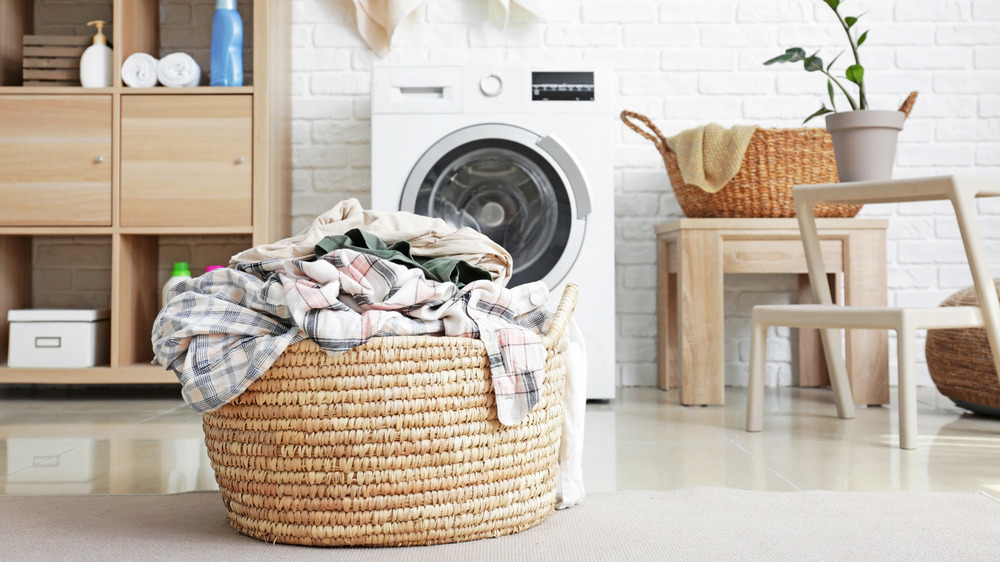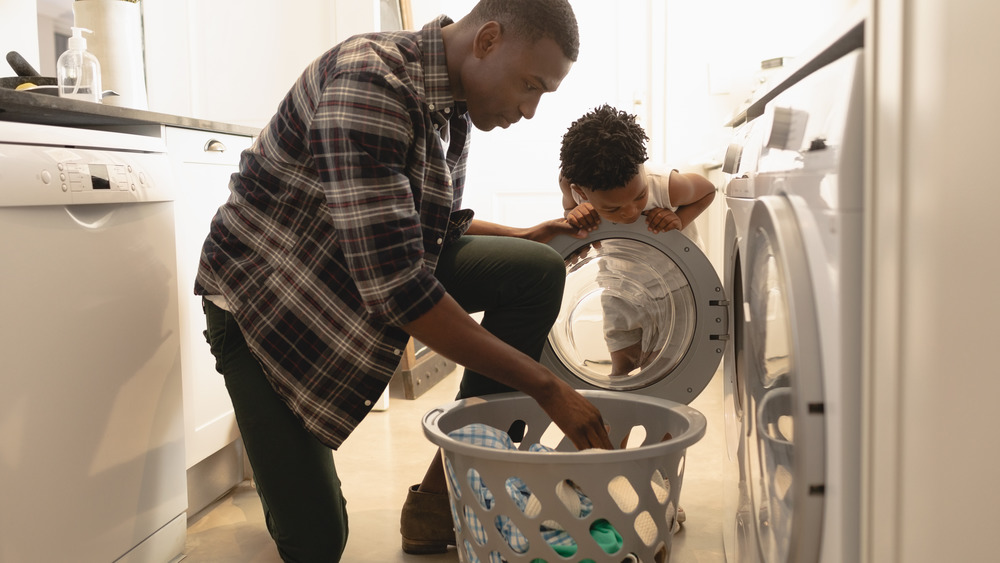Can Your Washing Machine Kill Germs?
When it comes to avoiding illness, doing laundry can be another layer of safety and precaution. But if you really want to tackle germs, consider your dryer the MVP, not necessarily the washing machine, experts say (via TIME). "High heat drying for at least 28 minutes is the most effective way to kill viruses," Kelly Reynolds, a germ researcher and associate professor of environmental health at the University of Arizona in Phoenix, tells TIME magazine. No matter how hot you set the water temperature in the washer, that doesn't have the same potency as the heat of the dryer unless you use bleach or some other disinfectant.
"When it comes to molds that cause skin or respiratory infections, or organisms that cause colds, flu, and stomach flu, most of them will survive the wash cycle," Reynolds says. If you can't dry certain fabrics on high heat or at all, the sun's UV rays also have disinfecting properties. So you can let your clothing drip-dry outdoors or in direct sunlight, she says.
Washing clothes certainly eliminates body odor and removes an environment for mold and bacteria to grow. (Just ask anyone who hasn't immediately tossed their workout clothes into the wash.) One study found that COVID-19 can live on fabric for up to two days, but after being exposed to high heat, the virus was inactive within five minutes (via Hackensack Meridian Health).
How to do the laundry of someone with an illness
"If you're concerned that your clothing may have been exposed to COVID-19, the best way to get rid of the virus is to wash any exposed clothing on heated cycles," as Dr. John Sensakovic of JFK Medical Center told Hackensack Meridian Health. That includes cloth masks, according to The New York Times.
Regardless of the germ, experts say to take care when handling laundry if you or someone in your household is ill. Wear disposable gloves when handling laundry from someone who is sick. Don't shake out dirty clothing, which can release viruses into the air.
Wash clothing, towels, and linens in the hottest water possible. Use bleach or color-safe bleach, and the dryer's heat when you can. Clean and disinfect hampers with a household disinfectant or soap and water, the CDC says. Clorox adds that its color-safe products contain hydrogen peroxide, which doesn't meet the U.S. Department of Environmental Protection's disinfecting requirements; so for fabrics that can't tolerate bleach, hot water, laundry soap, and dryer heat are your best bets.
If you wash an infected person's clothing separately from your own, be aware that some germs still can hang out in the washing machine, Reynolds tells TIME. "We've found that one germy item in the washer will spread to 90% of the other items," she says. Disinfect your washing machine between loads by running an empty cycle with bleach or another disinfectant.


